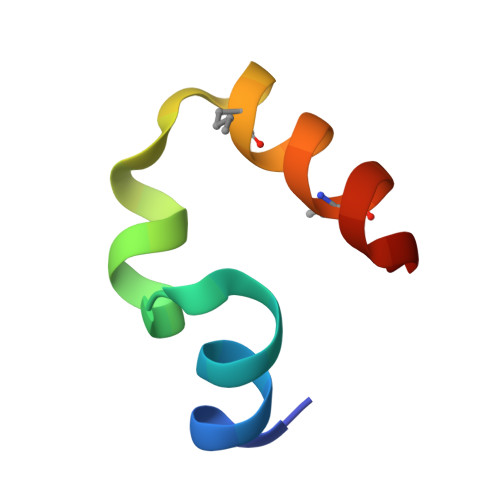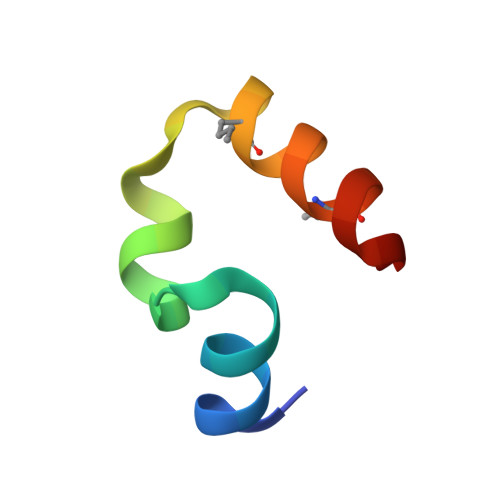Sub-microsecond Protein Folding.
Kubelka, J., Chiu, T.K., Davies, D.R., Eaton, W.A., Hofrichter, J.(2006) J Mol Biology 359: 546-553
- PubMed: 16643946
- DOI: https://doi.org/10.1016/j.jmb.2006.03.034
- Primary Citation of Related Structures:
2F4K - PubMed Abstract:
We have investigated the structure, equilibria, and folding kinetics of an engineered 35-residue subdomain of the chicken villin headpiece, an ultrafast-folding protein. Substitution of two buried lysine residues by norleucine residues stabilizes the protein by 1 kcal/mol and increases the folding rate sixfold, as measured by nanosecond laser T-jump. The folding rate at 300 K is (0.7 micros)(-1) with little or no temperature dependence, making this protein the first sub-microsecond folder, with a rate only twofold slower than the theoretically predicted speed limit. Using the 70 ns process to obtain the effective diffusion coefficient, the free energy barrier height is estimated from Kramers theory to be less than approximately 1 kcal/mol. X-ray crystallographic determination at 1A resolution shows no significant change in structure compared to the single-norleucine-substituted molecule and suggests that the increased stability is electrostatic in origin. The ultrafast folding rate, very accurate X-ray structure, and small size make this engineered villin subdomain an ideal system for simulation by atomistic molecular dynamics with explicit solvent.
Organizational Affiliation:
Laboratory of Chemical Physics, National Institute of Diabetes and Digestive and Kidney Diseases, National Institutes of Health, Bethesda, MD 20892-0520, USA.



















